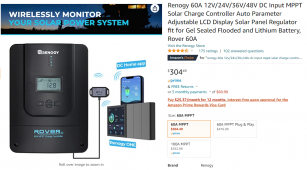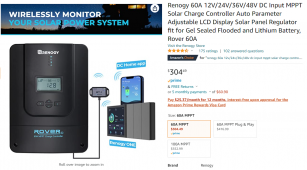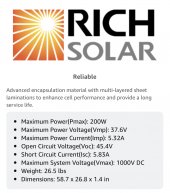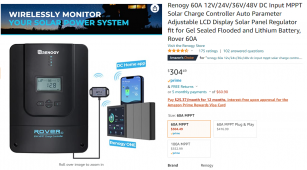sunshine_eggo
Happy Breffast!
Okay, array checked. 10X 200W panels? 2S5P array.
A 40 (2S3P) and a 30 (2S2P) would be fine
60A would cut it the majority of the time.
STC ratings are for when the CELLS = 25°C. This is rarely the case unless it's cold outside. When it's 25°C outside, cells are typically 40-50°C. This notably reduces their output.
Panels typically only produce ~80% of STC rated power. Check the panel's NMOT or NOCT rating - that's a much more realistic performance number.
My array in AZ at 6500' elevation at an optimized fixed year round tilt rarely produces rated power, and I'm probably getting about 10% more sun than sea level because of less atmosphere.
A 40 (2S3P) and a 30 (2S2P) would be fine
60A would cut it the majority of the time.
STC ratings are for when the CELLS = 25°C. This is rarely the case unless it's cold outside. When it's 25°C outside, cells are typically 40-50°C. This notably reduces their output.
Panels typically only produce ~80% of STC rated power. Check the panel's NMOT or NOCT rating - that's a much more realistic performance number.
My array in AZ at 6500' elevation at an optimized fixed year round tilt rarely produces rated power, and I'm probably getting about 10% more sun than sea level because of less atmosphere.







